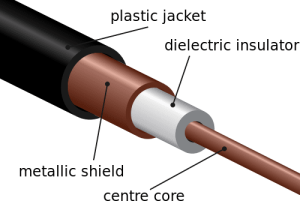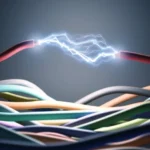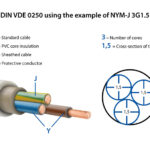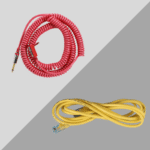An RG cable (Radio Guide cable) is a type of coaxial cable commonly used for transmitting radio frequency (RF) signals. The term RG originally stood for Radio Guide, as it was used in radio and television applications to transmit signals. Over time, the term has become a standard for identifying different types of coaxial cables, especially in telecommunications, networking, and broadcast industries.

What is rg cable
What is a Coaxial Cable?
Before diving into RG cables specifically, it's important to understand the basic structure of a coaxial cable. A coaxial cable consists of:
Inner Conductor: The wire in the center that carries the electrical signals.
Insulation: The layer that separates the inner conductor from the outer shield.
Shielding: A layer (often made of braided copper or aluminum) that protects the signal from external interference and prevents the signal from leaking.
Outer Jacket: The final protective layer that shields the cable from environmental damage.
Types of RG Cables
The 'RG' prefix is followed by a number that defines the type and specifications of the cable. Common examples of RG cables include:
RG-6: One of the most commonly used coaxial cables for television and satellite connections. It is designed for high-frequency applications and is widely used in cable TV systems, satellite installations, and broadband internet connections. RG-6 has a thicker insulation and better shielding than RG-59, making it suitable for longer distances and higher frequencies.
RG-59: Typically used for lower-frequency applications, such as CCTV (closed-circuit television) systems, security cameras, and short-distance video connections. RG-59 is thinner and more flexible than RG-6 but is less effective at maintaining signal quality over long distances.
RG-11: A thicker, more durable cable often used for long-distance runs in cable television systems or internet connections. RG-11 has a lower attenuation (signal loss) compared to RG-6, making it ideal for longer transmission distances.
RG-8: Used for high-power and long-distance RF transmission. It is often found in ham radio setups, broadcast, and military applications.
RG-58: A thinner and more flexible cable commonly used for RF signals, including in applications like antennas, radio, and some networking scenarios (though it's less common in modern networking).
RG Cable Specifications
Each type of RG cable comes with specific specifications, such as:
Impedance: The characteristic impedance (measured in ohms) determines the cable's ability to transmit signals without reflection or signal loss. Common impedances for RG cables are 50 ohms (used for RF and networking) and 75 ohms (used for TV, video, and satellite signals).
Attenuation: This refers to the signal loss that occurs as the signal travels through the cable. Cables with lower attenuation are better for long-distance transmissions.
Bandwidth: This defines the range of frequencies the cable can effectively carry without significant loss of signal quality.
Capacitance: The amount of electrical charge the cable can store, which affects its ability to transmit signals over long distances.
Common Uses of RG Cables
Television and Satellite TV: RG-6 is commonly used to connect satellite dishes, cable TV boxes, and televisions.
Networking: RG-58 and RG-59 cables are sometimes used for older networking systems or in specific RF applications.
CCTV Systems: RG-59 is widely used for connecting security cameras to DVRs in surveillance systems.
Radio and Ham Radio: RG-8 and RG-58 are used for transmitting RF signals in amateur radio setups.
Broadband Internet: RG-6 is also used for broadband internet connections in cable modem setups.
How to Choose the Right RG Cable?
When selecting an RG cable, consider the following:
Application: Different RG cables are designed for different applications, from TV to security systems to RF transmission.
Signal Quality: If you need to transmit a signal over long distances, you’ll want a cable with low attenuation (like RG-11).
Frequency Range: Choose a cable with an impedance that matches the devices you’re connecting (e.g., 75 ohms for TV, 50 ohms for RF applications).
Durability: For outdoor or industrial use, choose a cable with stronger shielding and weather-resistant jackets.
Conclusion
In summary, RG cables are a type of coaxial cable commonly used for transmitting RF signals in various applications such as television, satellite, internet, and security systems. The specific type of RG cable you choose depends on the required signal quality, distance, and frequency range. Understanding the differences between RG types (like RG-6, RG-59, RG-11) helps you select the right cable for your needs, ensuring efficient signal transmission.





